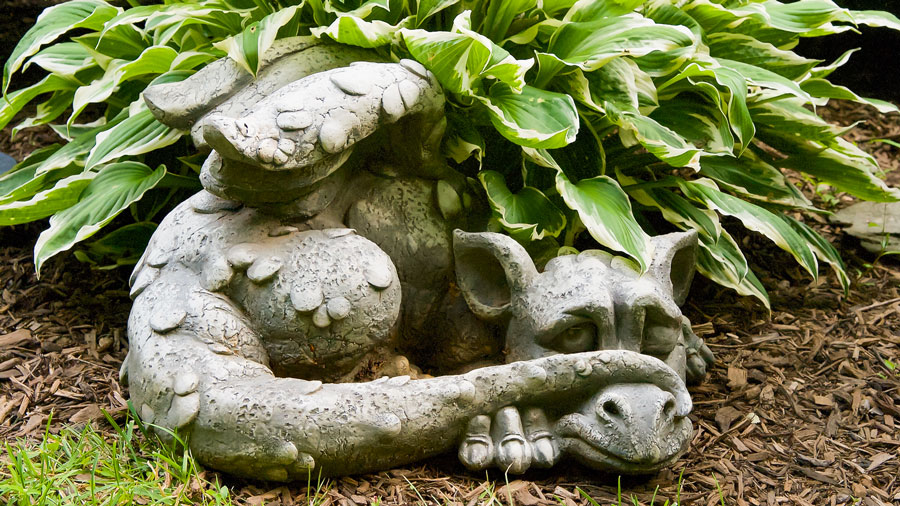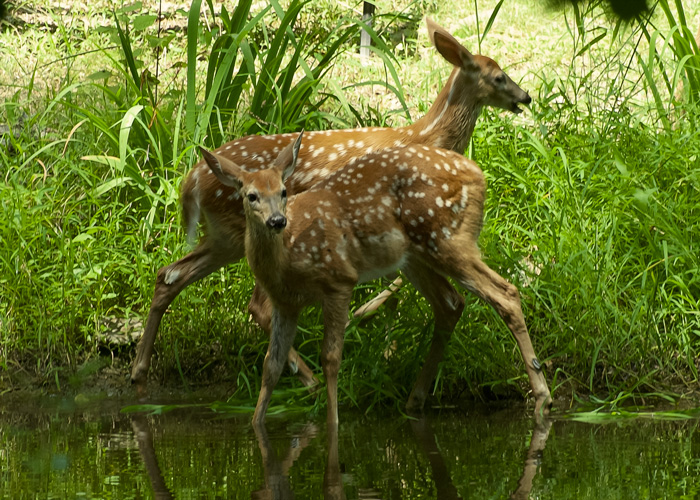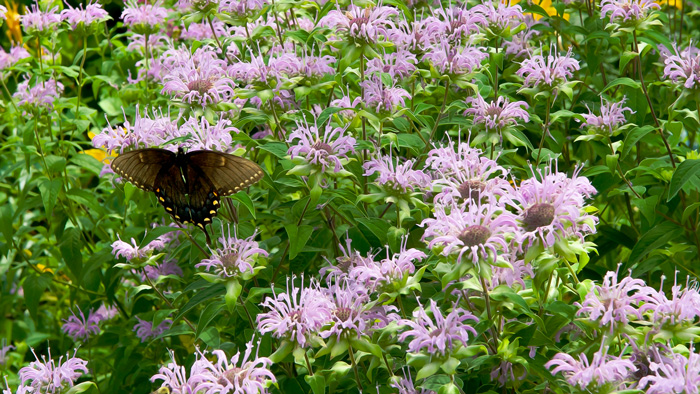The temperature has reached into the nineties, and it’s not yet noon. My fly rods remain in their tubes, my flies in their sleeves. It is much too hot to play tag with the fish of Bonnie Brook, too hot to do much of anything. Even the koi we stocked more than eighteen years ago, seek relief from the heat. I watch them face the current of the little stream that feeds the pond separating our lawn and gardens from a woodlot frequented by turkey, deer, and black bear.

The few clouds in an otherwise gentle blue sky appear as lazy as the stone statutes staring up at me from Trish’s gardens as I stroll across the lawn in my bare feet. Damp with perspiration after my brief stroll, I climb the steps of our back porch. Dropping onto the cushion of a wicker rocker, I raise a tall glass of lemonade from the table beside the chair. The ice cubes have melted in the short time that I’ve visited the koi and the outside of the glass is damp with condensation.
Looking back at the pond, I watch a doe with her twin fawns cross over the earthen dam. The mother flicks her ears back and forth to ward of the gnats that swarm around her head. Otherwise, she moves slowly, also affected by the heat. The fawns, on the other hand, are full of spunk, careening this way and that around the edge of the water. I’ve watched these youngsters grow in confidence since their birth only a few weeks earlier.

Below the porch, butterflies flutter amongst the tiger lilies that grow as high as my shoulder. Mostly black and yellow swallowtails, there are also a few monarchs.
Looking closer, I spy what is too small to be a hummingbird, but too large to be a bumblebee. A hybrid of both, the hummingbird moth beats its wings while sipping nectar from a patch of pink flowers. It’s hard to believe that this gentle, fairy-like creature began life as one of the hornworm caterpillars that enjoy munching on my tomato plants.
The pink flowers are those of wild Monarda that grow beside batches of a cultivated variety of the same plant, but with red flowers. Monarda has many names. I know it as bee balm, but others call it horsemint and oswego tea. It is also known as bergamot on account of its fragrant leaves that are said to smell like bergamot orange. Native Americans and early settlers used the plants as an antiseptic to treat wounds as well as throat and gum infections.

Bees join the butterflies, buzzing around black-eyed Susans that have survived the groundhog that lives in a burrow along the edge of our woodlot. Dragonflies swing back and forth as they patrol the lawn. High up in the hardwood canopy, cicadas periodically drone while a wren complains from the wooden house nailed to a cedar post in one of Trish’s gardens.
Movement catches my eye, and I turn in time to spy a chipmunk scurrying along the top of a stonewall Trish and I built under a white oak tree that has shaded our front lawn for more than forty years.
When a young hawk cries out, the fawns look back at the doe, but then continue their antics. A cottontail that had been lying on its side in a patch of sandy soil rises on its haunches. Its ears are cocked in two different directions, and as the raptor descends, the rabbit disappears into a tangle of day lilies. At about the same time, the chipmunk lets out a squeak before darting into a crack in the wall of rocks. The wren slips noiselessly into the birdhouse.
A moment later, the bird lands on the outstretched branch of a dogwood tree. Having fledged a few weeks after the birth of the fawns, the youngster’s cries sound like that of a bleating lamb, until an adult appears, and the two fly off together.
After draining my glass of lemonade, I rise from the rocker. There’s more to see, but my column for Skylands isn’t going to write itself.